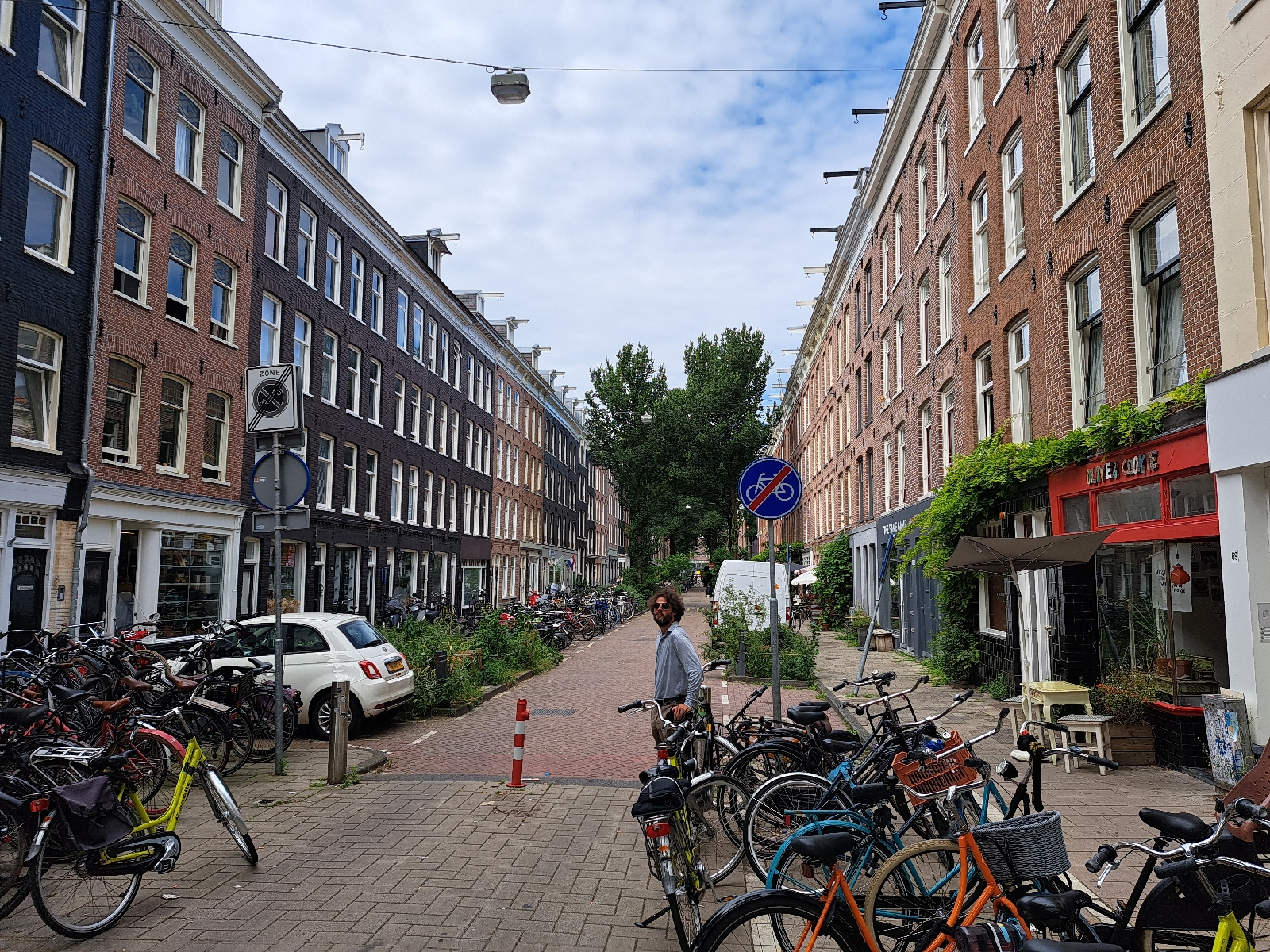Planning cities for people, the Gehl approach (Denmark Day 5)
We started the day with a brief lecture at Gehl Architecture's Copenhagen office. I took a route along the lakes to get there--a pleasant experience even if it added a minute or two. Once we all gathered, Andreas Røhl asked us what surprised us the most about Copenhagen. Folks' responses varied from how easy it was to get around to more cars in the city center than we anticipated. Andreas then gave us a brief overview of how Gehl came to his approach and how that approach became the basis of an urban consulting group's concepts and strategies.
Gehl himself trained as an architect, but his wife trained as a psychologist who asked him, "Why aren't you interested in people?" So, he started paying attention to people. Turns out, people make or break cities, so not a bad idea overall. After watching how people spend life between buildings,* aka research, Gehl figured out what makes for good mobility and public space.
First, mobility, aka moving across space, aka transportation, is about quality of life. Arranging buildings and public spaces, which include streets, at human scale. Essentially, that means keeping active soft edges between the public space (street) and private space (building) such that people can see and interact with on another on either side of the edge. It means keeping ground floor uses interactive with the street--not blank walls or parking garage screens. It means making it feel easy and safe to move through the public space (street) for a hierarchy of users such that the most vulnerable feel safest. So, for transportation, make people who walk and ride bikes feel invited with comfortable easy infrastructure built for us, like bridges.
After Andreas' presentation and a Q&A, we headed outside for a bike tour with Nina and Rasmus of Gehl Architects leading the way. They would tell us a bit about what we'd be riding through, lead us through it, and then stop to discuss the experience. For example, we crossed through an intersection onto a very insensible bridge design. Most walkways, bikeways, and autoways continue on side-by-side at different grades (heights) on streets, at the same grade at an intersection, and then back to separate side-by-side spaces at different grades on the other side of an intersection. Not so with the bridge below. For supposed (car) traffic engineering reasons, bikers have to cross over the car travel lane at the intersection to get onto the bridge. It's counterintuitive (and requires extra traffic signal stages to boot). It's bad design. (See? Even the Danish get it wrong sometimes too.)
Most of the bike tour took place along the harbor. This meant we could avoid taking up an entire block with our little mass of bicyclists without giving up learning about the various ways in which Copenhagen makes the city inviting. The harbor itself now has sections closed to fast-moving boats so people can enjoy the waterfront and the water itself. Several public swimming "pools" make use of the harbor as a resource for all to enjoy.
Copenhagen also provides plentiful seating in any plaza or park. In the case down below, the seating at the very bottom of the picture also helps keep cyclists from speeding through where people might be relaxing with a snack and chatting with a friend. The cobblestones, too, encourage slower cycling and signal that this is a place meant mostly for people off their bikes. (In some places, the cobblestones are ground to make a smooth riding path that feels obvious but matches the visual design of the rest of the path.)
Next up: Parking & bike locks
Random pic of the day: Possibly the oldest Brooks saddle (aka bike seat) that I've seen.
*Life Between Buildings: Using Public Space was Jan Gehl's first book (released in 1971).










Comments
Post a Comment